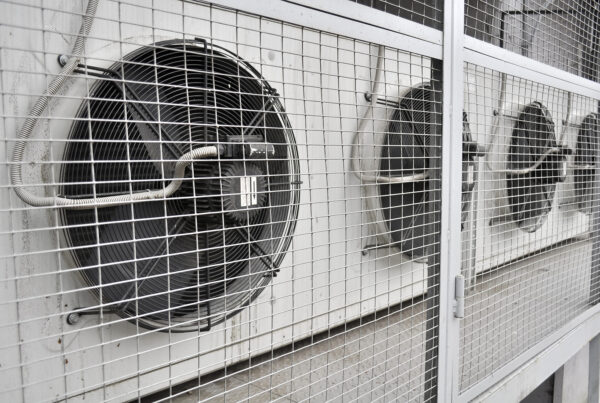Sound Energy Within Our Rooms
Sound energy in our rooms is produced by a vibration generating device such as a speaker, instrument, or singer. The loudspeaker diaphragm moves back and forth and creates vibrations within itself and within the air in our rooms. Instruments have air movement through them and this air movement produces vibrations that are controlled and regulated with valves in the case of brass instruments. A singer uses their vocal cords to produce vibrations and these vibrations in the air produce music. Everything that produces sound of any type within our rooms, whether that sound is wanted or not is produced by vibrations. We must address vibrations in our rooms if we are going to manage sound energy from any source.
Vibrations
Vibrations move from one material to another in our rooms. It is this energy transfer that we must address in our home theater, listening room, or professional recording studio construction. If we are trying to keep the sound energy from within our rooms from leaving our rooms and bothering our neighbors, we must deal with vibrations that strike our walls, floors, and ceilings. Sound energy created in our rooms touches our structure and then moves through the structure by producing vibrational energy. We go from air borne vibrations to structural vibrations. To control and manage these vibrations, we must use vibrational control technologies in the construction of our room boundary surfaces.
Sandwiches
We must use constrained layer, mass damped “sandwiches”. We must build new walls, floors, and ceilings that have multiple layers to them with each layer of material a different density and then arrange all of these materials in a way that provides for a synergy of vibrational energy reducing construction techniques. These are fancy words but all we are doing is blending different material types with different densities together in a manner that is then a “mass damped” structure which assists us in reducing structural vibrations. We are making a material “sandwich” and now must decouple this sandwich from any attached surface by using different types of techniques that are unique to room acoustic construction.
Vibrational Energy
Sound energy is converted to vibrational energy when it strikes our room boundary surfaces. We then send the vibration on a journey through many different density forests. Each layer of our wall, floor, or ceiling has a different material and density by design. The vibration has to work harder to get through some of our layers and not so hard to go through others. This process of forcing the vibration through many constrained, mass damped, layers reduces the vibrational strength of the wave. Now that we have built our vibrational barrier, we need to install it. We must use special decoupling techniques.
This process is similar to a truck fully loaded, losing its brakes on a 10 degree decline. First, the driver uses his emergency backup breaking system, then he is steered off the road to another lane that has an incline of 10 degrees instead of a decline and then at the top of the road is a large pile of sand to stop the vehicle completely. Each layer or barrier in the road imports just enough upon the truck that through a series of these events or layers over time, the truck or vibration is stopped.
Mass Decoupled From Mass
We need to decouple our new mass from the existing structure in order to achieve maximum performance. This means that we must put something between our new mass and the existing mass or wall. This will leave an air space between our new wall or ceiling and the existing structure. If two structures are connected vibrations pass through each of them from one to the other. If there is a pocket of air between them but they are connected with brackets, the vibrations will pass through the brackets. Instead of brackets, we will use springs, rubber or foam.
Foam, Rubber, Springs
One way to decouple a raised floor from the main floor is to build the raised floor on studs resting on rubber pads. These rubber pads will allow for our air space. Air is considered a good vibrational reducing layer of material. The rubber pads will be designed to absorb vibrational energy. Another technique is to use foam panels between the floors. This will accomplish the same thing as the rubber pads. Two walls or ceilings built next to each other can be decoupled by connecting them to each other with springs or a spring like, Z shaped, bracket. These spring brackets will absorb vibrations and minimize their amplitude from structure to structure.
If you have already built a raised floor, go ahead and continue building walls on top of this existing raised floor. Make sure the decoupling method chosen can take the extra weight imposed upon them by new walls. If you compress foam, spring, or rubber too much, you turn the decoupler into a rigid system and it will not absorb vibrational energy any longer and you will have turned it into a energy transmitting device. If the floor is in and the walls installed on top of the raised floor and then the ceiling is placed upon the walls which are connected to the raised floor, the only physical connection between the rooms is the rubber or foam. Minimizing structure surface contact is our goal.
Russian Doll Effect
In a larger studio, one can go even farther. One can create two separate foundations separated by dirt. You then build each wall, floor and ceiling on each separate foundation. This is the room within a room or the Russian doll effect. Russian dolls come one inside each other. As you pull one out and open it, there is another, smaller doll just inside This is the same principle. We have a room within a room with each room physically separated by dirt at the foundation level. If you choose this method which is the most expensive but the one which produces the best sound transmission loss results, you will need a minimum of 6″ of air space between each room.
Sound energy becomes vibrational energy within the physical structure of our rooms. In order to reduce these vibrations at this structural level, we need to use multiple materials grouped together to form a constrained layer that has mass damping. Each material we use has a different density and this layering of materials forces the vibration to have to go through our density obstacle course. This journey through multiple materials slows the vibration down and reduces its amplitude. We must then take our new barrier and install it in a manner that decouples it physically from the existing structure, so it can retain its vibrational reducing properties.






To increase the ceiling sonic height without structural modifications, you can use quadratic diffusion. Diffusion is a technology to make…
I required from an entrepreneur the building of a home cinema with precise INTERIOR dimensions of 9m x 6m x…
If you know the frequency and amplitude of the reflection, you have a better chance of identifying sources.
Can the quality of a sound reflection identify the reflection source?